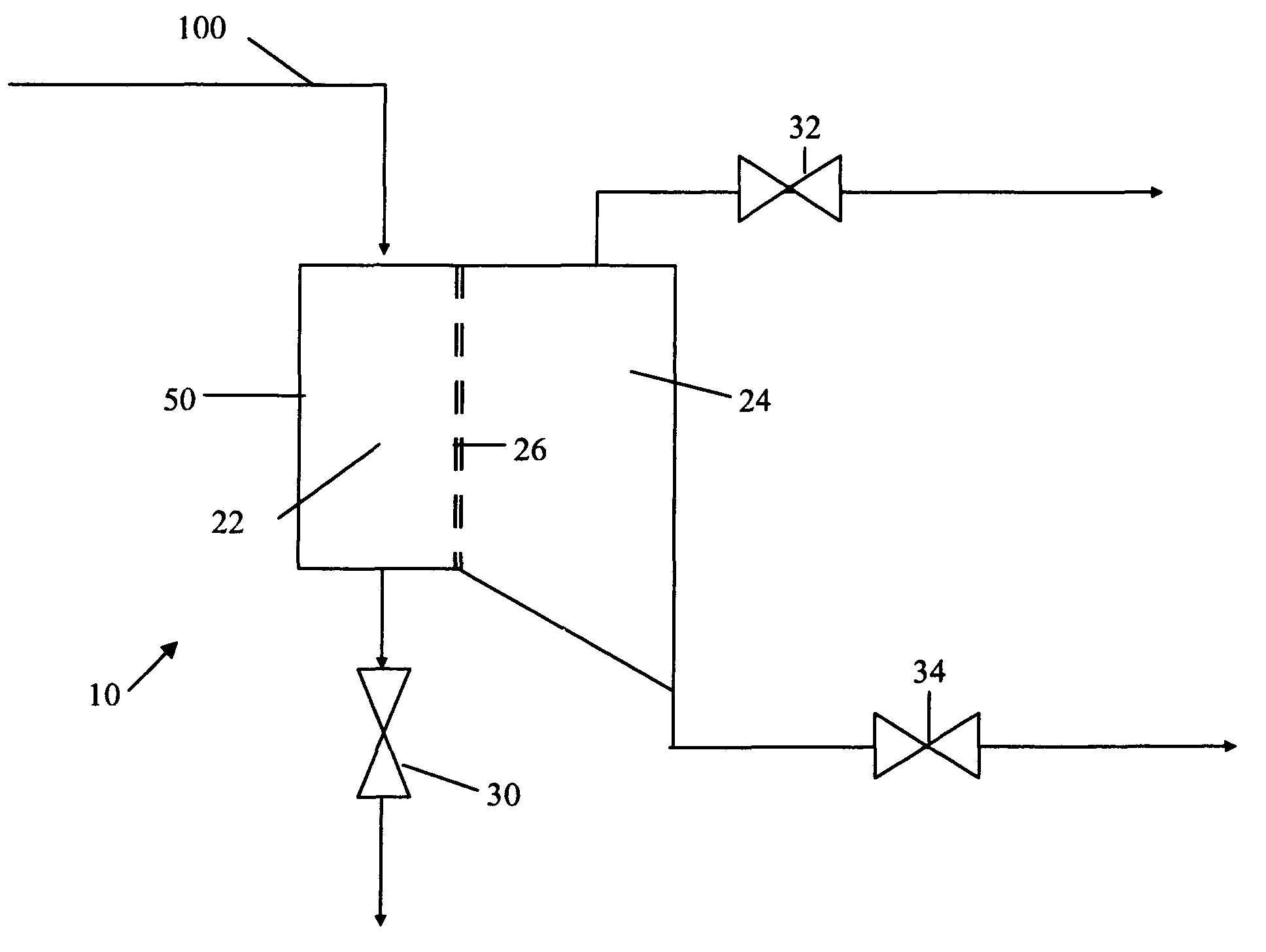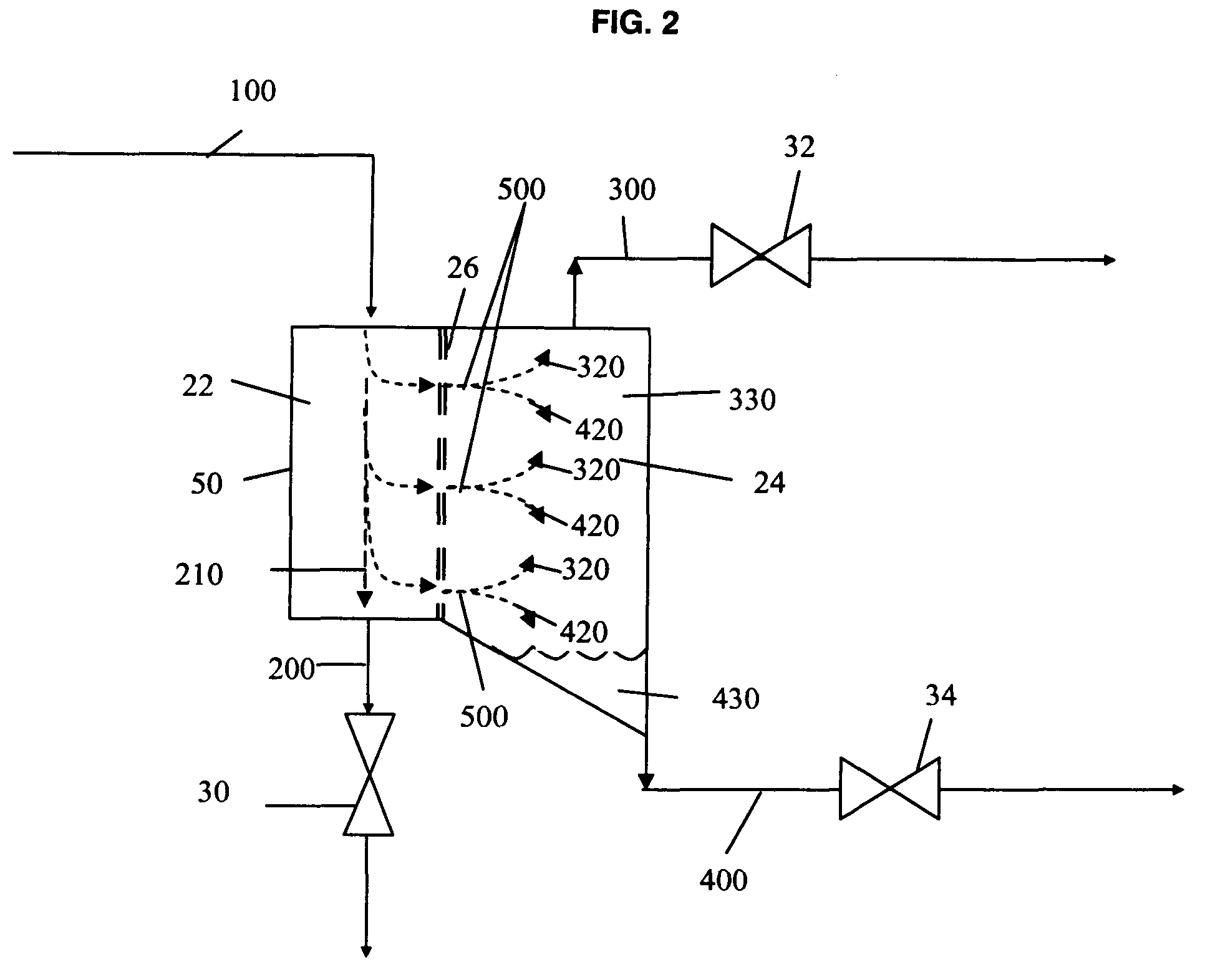Process for separating components of a multi-component feed stream
a multi-component feed and component technology, applied in the direction of separation processes, filtration separation, moving filter elements, etc., can solve the problems of contaminated organic solvents, electrolytes and particulates, and the failure of kagiyama to teach the use of separators alone, so as to achieve efficient and effective operation.
- Summary
- Abstract
- Description
- Claims
- Application Information
AI Technical Summary
Benefits of technology
Problems solved by technology
Method used
Image
Examples
examples
[0062]Several examples of the separation of multi-component feed streams (in particular ternary and binary mixtures of components) according to the present invention were simulated. The results of the simulations demonstrate the effectiveness of the present method and apparatus to separate the components of the mixtures based upon the conditions described. Each of Example Nos. 1 to 4 below involve the simulation of a process for separating a multi-component feed stream into a retentate, a permeant vapor fraction, and a permeant liquid fraction. The simulations were conducted using the ASPEN Plus® program, a commercially available simulation software package. The simulations involve selecting, as simulation inputs, predetermined conditions which are associated with the process described in each of the examples hereof. Based on the information represented by the simulation inputs, the ASPEN Plus® program generates certain simulation outputs that include numerical values for certain ph...
example no.1
Example No. 1
[0069]Example No. 1 is illustrative of a continuous process for separating methane from a pressurized and cooled liquid feed stream comprising liquid carbon dioxide, propane, and methane (all components of the stream are in the liquid state). The apparatus for use in the separation comprises ten modules in series. No external energy source is applied to the apparatus (that is, the apparatus does not include a reboiler or condenser). The apparatus for use in this example is shown in FIG. 4.
[0070]A multi-component feed stream 1 comprising liquid carbon dioxide, methane, and propane in the proportions identified in Table 1 below is supplied to the high-pressure chamber 5 of the first module 3 at a rate of 100 kg / hr, a pressure of 315 psia, and a temperature of −32° F. (all predetermined). The low-pressure chamber 7 of module 3 is maintained at a predetermined pressure of 55 psia. Accordingly, the pressure differential across the porous separator 9 of this module is 260 psi...
example no.2
Example No. 2
[0078]The process of Example No. 2 is similar to the process described in Example No. 1, but differs in that the apparatus for use in the separation is equipped with a reboiler and condenser (neither of which is shown in FIG. 4).
[0079]More specifically, a second simulation was performed using all of the predetermined conditions defined in Example No. 1, but with the predetermined conditions that a partial reboiler and a partial condenser are used to further enrich the vapor permeant fraction with the relatively low-boiling methane and to further remove methane from the liquid permeant fraction. The liquid permeant fractions exiting each module are fed into separate partial reboilers which together have a cumulative capacity for work of 5100 Btu / hr and which heat and at least partially vaporize their respective liquid permeant fractions. Since the methane is vaporized more readily compared to the propane or carbon dioxide, the vaporized portions of these fractions are ri...
PUM
| Property | Measurement | Unit |
|---|---|---|
| temperature | aaaaa | aaaaa |
| pressure | aaaaa | aaaaa |
| pressure drop | aaaaa | aaaaa |
Abstract
Description
Claims
Application Information
 Login to View More
Login to View More - R&D
- Intellectual Property
- Life Sciences
- Materials
- Tech Scout
- Unparalleled Data Quality
- Higher Quality Content
- 60% Fewer Hallucinations
Browse by: Latest US Patents, China's latest patents, Technical Efficacy Thesaurus, Application Domain, Technology Topic, Popular Technical Reports.
© 2025 PatSnap. All rights reserved.Legal|Privacy policy|Modern Slavery Act Transparency Statement|Sitemap|About US| Contact US: help@patsnap.com



